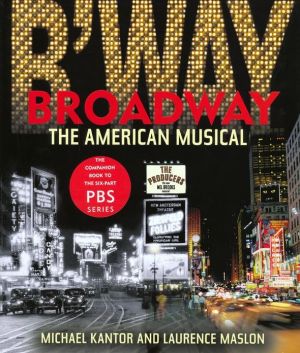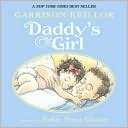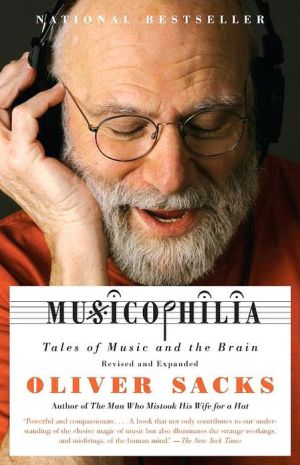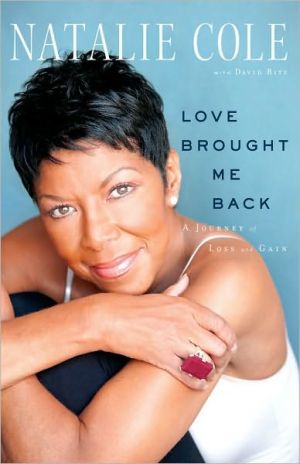Broadway: The American Musical
Along with jazz and abstract expressionism, the Broadway musical is one of the few uniquely American art forms. A companion to the six-part PBS documentary series, BROADWAY: THE AMERICAN MUSICAL is the first comprehensive history of the musical, from its roots at the turn of the 20th century through the smashing successes of the new millennium. The compelling, in-depth text is lavishly illustrated with a treasure trove of photographs, sheet-music covers, posters, scenic renderings, production...
Search in google:
Along with jazz and abstract expressionism, the Broadway musical is one of the few uniquely American art forms. A companion to the six-part PBS documentary series, Broadway: The American Musical is the first comprehensive history of the musical, from its roots at the turn of the 20th century through the smashing successes of the new millennium. The compelling, in-depth text is lavishly illustrated with a treasure trove of photographs, sheet-music covers, posters, scenic renderings, production stills, rehearsal shots, and caricatures, many previously unpublished.Complementing the narrative are lively sidebars that highlight the stars, the shows, and the songs--the key ingredients that make the musical great. Each chapter will also include essays written by some of Broadway's most fascinating luminaries, past and present. An entertaining amalgam of unpublished material, candid and production photographs, and a trunkful of anecdotes and Broadway lore, Broadway will appeal to eighth-graders in their first high school musical as well as to connoisseurs of the art form. Publishers Weekly Those critics and theatergoers who have for some time lamented the death of the Broadway musical can take heart: thanks to this glorious paean, the hills are once again alive with the sound of music-and much more. Though this nostalgia-laden tome is designed as a companion book to a forthcoming PBS series, it stands on its own as a particularly striking and comprehensive take on a uniquely American art form. The copious illustrations alone are worth "the price of admission," as history unfolds through archival and contemporary photos (Fred and Adele Astaire in 1924; Tommy Tune swooning over Twiggy in 1983's My One and Only); sheet music covers (the Prohibition-era ditty, "How Are You Going to Wet Your Whistle When the Whole Darn World Goes Dry?"); and vibrant photographic spreads (Paul Robeson in a 1928 production of Showboat; Patty Lupone in Evita). The meticulously researched text spans the years 1893 to 2004 in six information-packed chapters, each of which opens with a "Who's Who"-brief vignettes about the period's most celebrated personalities-and is followed by a "Broadway and" section, which covers, depending on the chapter's time frame, such topics as Tin Pan Alley, radio, Hollywood, original cast albums, etc. "Spotlight on" examines a significant musical of the period (from The Follies of 1919 to Sunday in the Park with George). The chapters conclude with especially interesting "Archives" segments-essays by theater veterans past and present. Even the book's endpapers reflect Broadway's evolution: both are photos of the theater district's famed Shubert Alley, but theater posters indicate that the first shot is circa 1962, the second is 2004. And, just as in real life, everything on Broadway that's old is new again. The current blockbuster Wicked (based on Gregory Maguire's novel twist on The Wizard of Oz) and 1975's African-American version, The Wiz? Old news: Broadway audiences saw this classic's first musicalization in 1904. And those recent strikes by Actors Equity that have more than once threatened to close down the Great White Way? Nothing new there: the first Equity pickets were brandished in 1919. With its beguiling blend of entertainment and history, this splendid work is a must-have, whether you're a musical-comedy devotee (i.e., you know that Barbara Cook's Broadway debut was in 1951's Flahooley) or a neophyte (you're not sure who Barbara Cook is). (Oct. 13) FYI: The PBS series runs October 19, 20 and 21. 75,000 first printing. Copyright 2004 Reed Business Information.
Broadway\ \ By Laurence Maslon Michael Kantor \ Bulfinch Press\ Copyright © 2004 Michael Kantor and Laurence Maslon\ All right reserved.\ ISBN: 0-821-22905-2 \ \ \ \ Introduction\ Most of the histories of the American musical have focused, understandably, on the "musical" aspect of the genre; this book puts the "American" center stage. The Broadway musical defines our culture and is, in turn, defined by it. The musical tells its stories in music, in lyrics, in dialogue, in performance, and in dance. Each of these elements is a potent cultural indicator on its own; put together, they provide a frequently brash, occasionally thoughtful, always colorful portrait of our country. Like many of the best Broadway performers, this version of American history demands to be heard. \ Once upon a time, when New York theater was the most prestigious performance art form in the country, Broadway musicals were the boldest, bravest expression of the American character. Even though the theater lost its preeminence over the course of the last century, its journey to redefine itself and prove itself relevant again makes for a compelling story, indicative of many trends and tensions in our popular culture. The musical has always reflected different social and political forces-patriotism, skepticism, commercial consumption, escapism, revolt, globalization-and has put those onstage for everyone to see. In one way, the history of the musical can be read as a kind of history of, say, seventeenth-century Europe: a defined territory struggling to survive, constantly under siege by economic forces, sometimes winning, sometimes losing. Its story contains the rise and fall of several dynasties: great leaders emerge, come into their own, pass from the scene, and are replaced by a new generation. Like any national history, the epic of the Broadway musical has its heroes and its villains, and in the end, if the voice of the people is not exactly the voice of God, it is the voice of the bottom line, which in show business might as well be the same thing.\ A thousand different factors go into both the performance and the reception of a musical. This book shows how this complicated amalgamation has been put together over the course of a century. Because Broadway: The American Musical, as a series and as a book, focuses on a myriad of cultural factors, it must be selective. There are many cherished productions, performances, and personalities that have been cut out of town, as it were. If it is any consolation, many of the authors' favorites didn't make it to "Broadway" either.\ In addition to the historical narrative, this book explores several other key aspects of the musical. The Iyrics to more than a dozen songs are reprinted in their entirety; these were either seminal in the development of the songwriting craft or are wonderfully indicative of the culture that brought them onto the stage and into the world. Seven productions have been spotlighted; each show is either a brilliant reflection of its time or sui generis or both. Performers who have devoted their careers to the Broadway stage-not an easy sacrifice to make-are showcased in each chapter's "Who's Who"; certain major figures are dealt with at greater length in the narrative. One aspect of the book that will appeal to readers interested in cultural history is the six essays about Broadway and its relation to other forces, such as Hollywood, television, and real estate, that have been key allies and adversaries to the industry of Broadway. Archives of newly recovered source material, as well as essays taken from the extensive interviews conducted for the documentary series, allow the great artists of the musical to speak for themselves.\ The series Broadway: The American Musical is grounded by the nearly sixty interviews of major figures conducted specifically for the program. Most of the direct quotes in the narrative are taken from these precious sources, and a complete list of interviewees is included at the back of the book. The more historical sources quoted in the book are marked by the date of their publication. Sadly, several of our beloved colleagues-Brendan Gill, Frances Godowsky, Adolph Green, Al Hirschfeld, Peter Stone-were interviewed but left us before the project was completed. We are honored to be able to include their perceptions.\ At the end of every theatrical season, there is a barrage of articles asking, "Whither the Broadway musical?" This book does not presume to foretell where the musical is going; it simply tries to figure out how it got where it is today. In the best of all worlds, the book and the series will excite their audiences enough to make them contribute to the history of the American musical-as creator, performer, or spectator. The best reason to revel in the past is that it gives one the passion to embrace the future.\ Curtain up ...\ (Continues...)\ \ \ \ \ Excerpted from Broadway by Laurence Maslon Michael Kantor Copyright © 2004 by Michael Kantor and Laurence Maslon. Excerpted by permission.\ All rights reserved. No part of this excerpt may be reproduced or reprinted without permission in writing from the publisher.\ Excerpts are provided by Dial-A-Book Inc. solely for the personal use of visitors to this web site. \ \
\ From Barnes & NobleThis companion book to a much-touted 2004 PBS series provides a comprehensive history of the musical, one of the few uniquely American art forms. Using a trove of primary materials, filmmaker Michael Kanton and co-writer Larry Maslon trace the evolution of American musical theater over the past century. Broadway: The American Musical is lavishly illustrated with finely reproduced photographs, posters, scenic-music covers, and caricatures.\ \ \ \ \ Publishers WeeklyThose critics and theatergoers who have for some time lamented the death of the Broadway musical can take heart: thanks to this glorious paean, the hills are once again alive with the sound of music-and much more. Though this nostalgia-laden tome is designed as a companion book to a forthcoming PBS series, it stands on its own as a particularly striking and comprehensive take on a uniquely American art form. The copious illustrations alone are worth "the price of admission," as history unfolds through archival and contemporary photos (Fred and Adele Astaire in 1924; Tommy Tune swooning over Twiggy in 1983's My One and Only); sheet music covers (the Prohibition-era ditty, "How Are You Going to Wet Your Whistle When the Whole Darn World Goes Dry?"); and vibrant photographic spreads (Paul Robeson in a 1928 production of Showboat; Patty Lupone in Evita). The meticulously researched text spans the years 1893 to 2004 in six information-packed chapters, each of which opens with a "Who's Who"-brief vignettes about the period's most celebrated personalities-and is followed by a "Broadway and" section, which covers, depending on the chapter's time frame, such topics as Tin Pan Alley, radio, Hollywood, original cast albums, etc. "Spotlight on" examines a significant musical of the period (from The Follies of 1919 to Sunday in the Park with George). The chapters conclude with especially interesting "Archives" segments-essays by theater veterans past and present. Even the book's endpapers reflect Broadway's evolution: both are photos of the theater district's famed Shubert Alley, but theater posters indicate that the first shot is circa 1962, the second is 2004. And, just as in real life, everything on Broadway that's old is new again. The current blockbuster Wicked (based on Gregory Maguire's novel twist on The Wizard of Oz) and 1975's African-American version, The Wiz? Old news: Broadway audiences saw this classic's first musicalization in 1904. And those recent strikes by Actors Equity that have more than once threatened to close down the Great White Way? Nothing new there: the first Equity pickets were brandished in 1919. With its beguiling blend of entertainment and history, this splendid work is a must-have, whether you're a musical-comedy devotee (i.e., you know that Barbara Cook's Broadway debut was in 1951's Flahooley) or a neophyte (you're not sure who Barbara Cook is). (Oct. 13) FYI: The PBS series runs October 19, 20 and 21. 75,000 first printing. Copyright 2004 Reed Business Information.\ \ \ Library JournalAn extravaganza of history, interviews, and photographs of Broadway musicals from 1893 to 2004, this masterly compilation serves as companion to the PBS documentary airing in October. While Andrew Lamb's 150 Years of Popular Musical Theatre discusses the shows in detail and Ken Bloom's Broadway: Its History, People and Places includes a special emphasis on musicals, there is much here that's original. Documentary filmmaker Kantor and Maslon, a master teacher at NYU, cover the productions in chronological chapters that also present a look at "Who's Who" (the major performers of the period), "Broadway and" (essays on important influences of the period), "Spotlight on" (an indepth discussion of a milestone production), "Words and Music" (an analysis of an important song lyric), and "Archives" (articles by, or interviews with, major figures in the American musical scene). Illustrated from cover to cover with over 500 photographs, many in color and/or never before published, this work would be an exciting adventure for the musical lover even without the televised series. Highly recommended for all theater collections.-Laura A. Ewald, Murray State Univ. Lib., KY Copyright 2004 Reed Business Information.\ \








